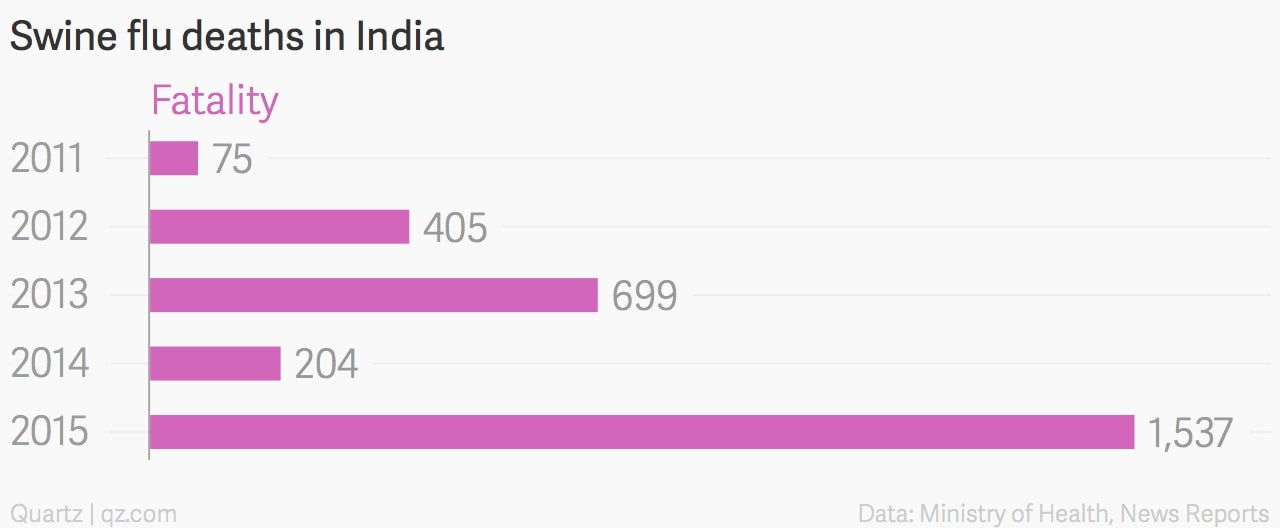While India ignores its swine-flu epidemic, the virus may have become deadlier
This post has been updated.


This post has been updated.
India’s swine-flu crisis is becoming deadlier. So far about 1,500 have been killed by the flu in the country since December 2014.
What makes this worse is that India is now staring at a more virulent form of the virus than the one that caused the 2009 swine flu pandemic, a new study conducted by scientists at Massachusetts Institute of Technology (MIT) has found.
Viruses evolve rapidly. Thus their genetic code, which undergoes mutations during evolution, gets the opportunity to figure out more quickly what changes serve its master the best.
According to the study published in the journal Cell Host & Microbe, the Indian swine flu appears to be a D225N mutant, which has been previously linked to the serious form of the illnesses, leading to more hospitalisations and deaths.
The trouble is that India has not been actively providing sequences to the global database, making it difficult to study the new strains of virus circulating in the country. This limited knowledge means, according to MIT scientists Kannan Tharakaraman and Ram Sasisekharan, that it may be difficult to link the deaths to the mutations in the virus. But the few traits they have been able to detect are a “potential cause for concern”.
Om Jaslok, director of the infectious diseases department at Jaslok Hospital in Mumbai, has found that swine-flu patients today need to be treated with anti-viral drugs for twice the number of days compared to previous outbreaks. This implies that the virus has evolved to become harder to treat.
The healthy ministry has stuck by its prior assertion about virus mutations. NDTV has a statement from the ministry that states, “The virus has not undergone any major mutation so as to make it more virulent and nor has the H1N1 virus become resistant to the mainline drug Tamiflu.” (Updated)
The ministry’s main argument in rubbishing the study is that the MIT scientists have used old data. If the study is correct, the ministry believes that the virus should have caused a sever outbreak even last year.
“We’re really caught between a rock and a hard place, with little information and a lot of misinformation,” Sasisekharan told FirstPost.

There have been more than 25,000 cases of swine flu in the country since December. With a shortage of anti-viral drugs and diagnostic kits having affected diagnosis and treatment, the disease has been difficult to bring under control.
There are only 21 labs capable of testing for swine flu. This probably means the numbers above are under-reported. The government has admitted that the number of labs is not enough and hopes to set up more soon.
Swine flu was first detected in Mexico in April 2009. While it has nothing to do with pigs, the name was given because laboratory testing showed that many of the genes in the virus resembled those found in pigs in North America.
After a global pandemic died down, there have been multiple outbreaks in several countries in the intervening years. In this Indian outbreak, Gujarat and Rajasthan seem to be the worst affected in India with more than 600 deaths in these states as of March 10.